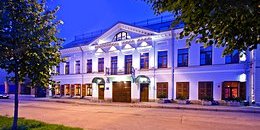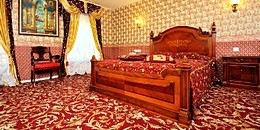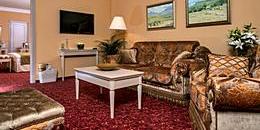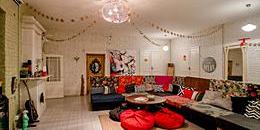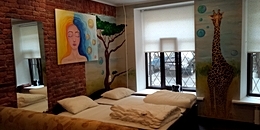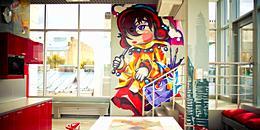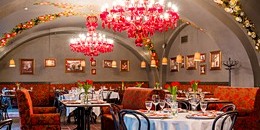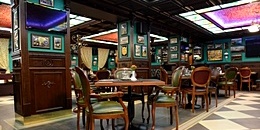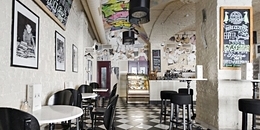Kryukov Canal
This historic canal is less well known than St. Petersburg's troika of narrow central waterways - the Griboedov Canal and the Moyka and Fontanka River. It does, however, run perpendicular to and connect all three of them. Its lack of recognition is a shame. First, because its granite embankments and old bridges are quite beautiful and second because many of St. Petersburg's most impressive attractions stand on its banks - such sites as New Holland, the Mariinsky Theatre, and the bell tower of St. Nicholas Naval Cathedral. The history of the channel is also unique in many ways.
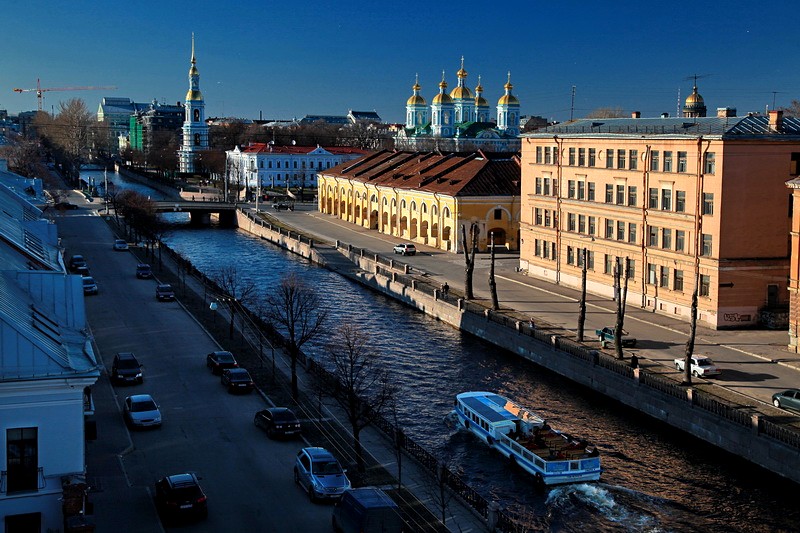
Kryukov Canal was originally dug from the Neva to the Moyka River 1717-1720. The work was supervised by a certain Semyon Kryukov, after whom the canal was named. Then, in 1782-1787, it was extended to the Fontanka River. In the beginning of 19th century, the canal was equipped with granite embankments and in 1847 the section from the Neva to Blagoveshenskaya Ploshchad (Annunciation Square, now Ploshchad Truda - Square of Labor) was run through a pipe, making it possible to access the Neva only via the Admiralteysky and the Novo-Admiralteysky Canals.
One of the main attractions of the Kryukov Canal is the man-made island Novaya Gollandia (New Holland). It appeared at the time of the digging of the canal started, and in 1765-1780 the island was built up with red-brick warehouses under the supervision of Sava Chevakinsky. Its waterway entrance was adorned with a monumental neoclassical red brick arch designed by Jean-Baptiste Vallin de la Mothe in 1788. Parallel to the warehouses on the opposite bank of the canal stand the massive Kryukov Naval Barracks.
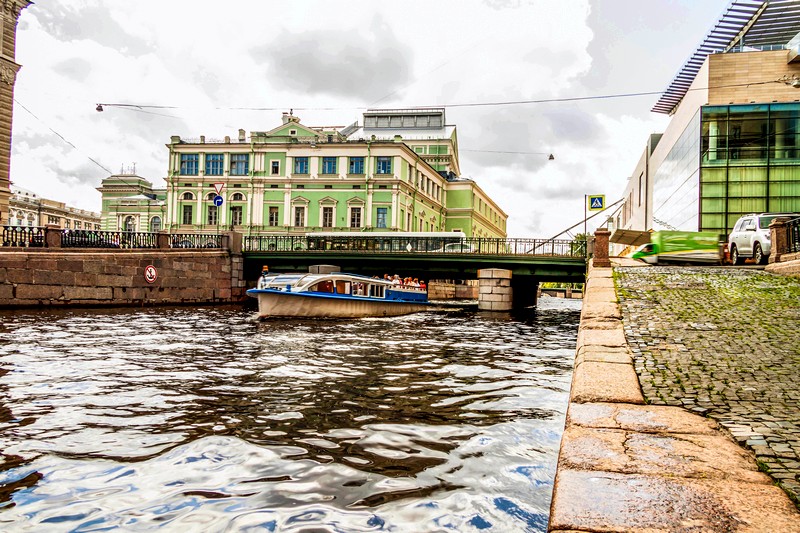
Along the embankment to the south of New Holland from the end of the 18th century stood the Lithuanian Castle. This peculiar building in the form of an irregular pentagon towers was designed by Ivan Starov in 1787 to house a prison. It remained empty for over a decade after construction, and was then given as a barracks to the Lithuanian Musketeers Regiment, hence its name. It was reconverted into a prison in the 1820s and used to incarcerate violent criminals and vagrants, as well as some political prisoners. The radical writer Vladimir Koralenko was imprisoned here in the 1870s for distributing revolutionary pamphlets, while the famous (and famously alcoholic) author Alexander Kuprin was held in October 1903 for drunken affray in a restaurant. During the February Revolution of 1917, a mob gathered outside the prison and it was burnt to the ground. Its foundations were later used in the construction of the imposing Stalinist Residential Building of the Wharf Workers Union.
Next door to the Lithuanian Castle across Ulitsa Dekabristov, and built simultaneously with the castle, the Lithuanian Market was one of several shopping arcades designed by Giacomo Quarenghi, similar in design to his Maly Gostiny Dvor on Dumskaya Ulitsa and even more so to the Nikolsky Market further east along the canal. By the 1920s, the market had fallen into disrepair and after a fire it was replaced by the constructivist First Five-Year Plan Palace of Culture. The Palace was a popular cultural venue where many famous Soviet artists and musical groups performed. Controversially, in 2005, this massive building was demolished for the construction of the second stage of the Mariinsky Theatre. Opened at the end of the 2013 season, Mariinsky-2 is the Kryukov Canal's most modern building, facing the back of the main Mariinsky Theatre across the canal.
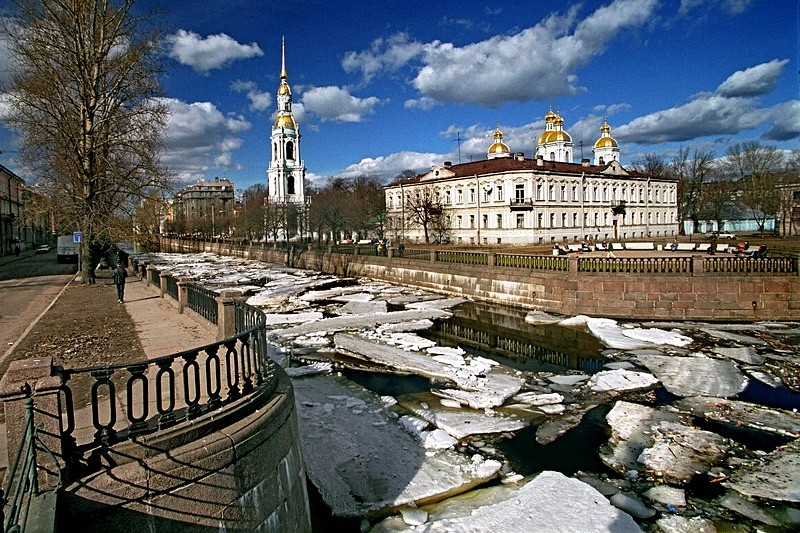
In 1855-1861, the apartment house of Baron Fitingof was constructed across the canal from the Lithuanian Castle. Construction was supervised by the Swedish-Russian architect Carl Anderson. Today it is the museum and exhibition center "Petersburg Artist."
One of the most striking buildings along the canal is the Vege Apartment Building (No. 14) at the corner of Prospekt Rimskogo-Korsakovo. Built for the owner of a chocolate factory 1912-1914 by Sergey Ovsyannikov in Neoclassical Revival style, the dark gray granite facade of the building is richly decorated with sculptures and haut reliefs, with a central archway supported by mighty Atlantes. On entering the building, visitors are greeted by a statue of Pan, relaxing with his pipes on a bench in the vestibule.
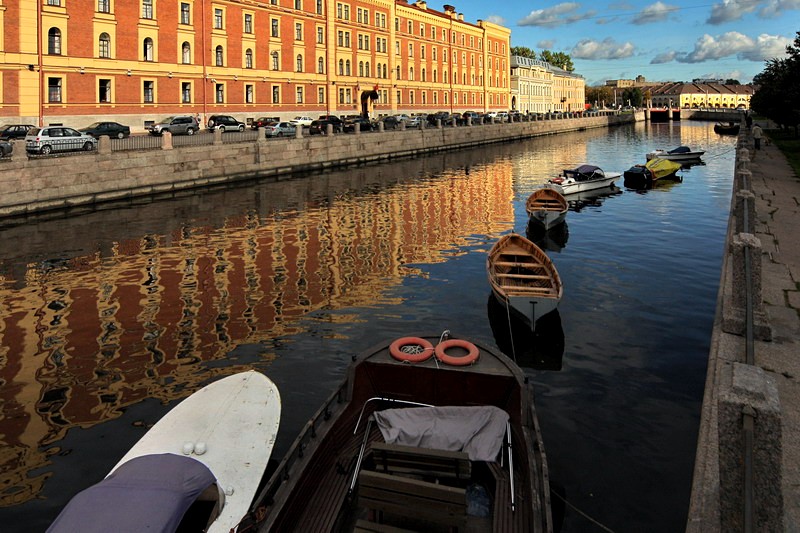
On the opposite bank of the canal at No. 15, a grand neoclassical building from an earlier era was built to house the Gymnasium of the Imperial Philanthropic Society (No. 15). The original gymnasium was constructed by two of the finest architects of the period, Konstantin Ton and Vasiliy Stasov. The Gymnasium stands opposite what is almost certainly the most beautiful building along the canal, the St. Nicholas Naval Cathedral. Built between 1753 and 1762 by Sava Chevakinsky, this beautiful baroque cathedral is set back from the canal, with its high bell tower on the water's edge.
Six bridges cross the canal. All but the Kashin Bridge are three-span stone bridges encased in granite. The bridges have been repeatedly rebuilt and reconstructed, but their original forms have been preserved. Of the surviving decorative elements on the bridges, it is worth noting the original wrought-iron lattices on the Staro-Nikolsky Bridge and the Decembrist Bridges and the metal lampposts of the Torgovy and Matveev Bridges. As anyone who travels along the Kryukov Canal on a boat trip will be made aware, the Staro-Nikolsky Bridge is also the site from which you can see more bridges than anywhere else in St. Petersburg - seven in total along the Kryukov and Griboedov Canals.
| Characteristics of the river: | Length: 1.015 km |
|---|---|
| Major bridges: | Smezhny Bridge, Staro-Nikolsky Bridge, Kashin Bridge, Torgovy Bridge, Decembrists Bridge, Matveev Bridge |

